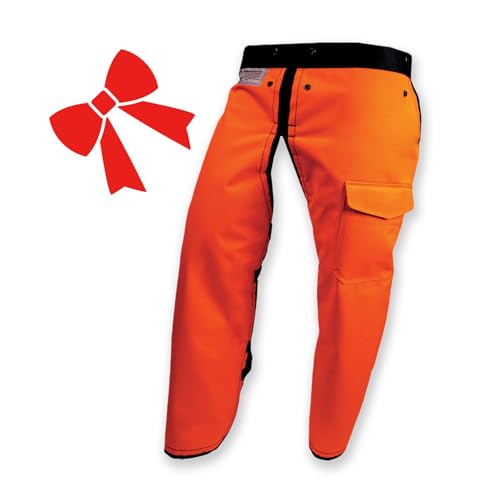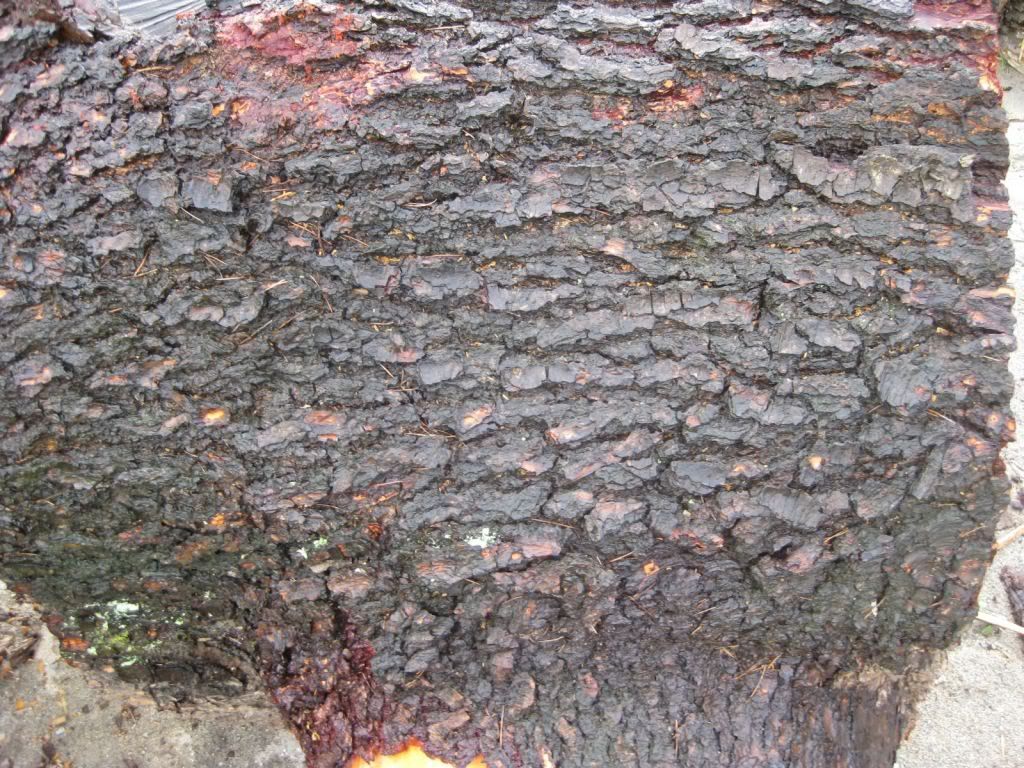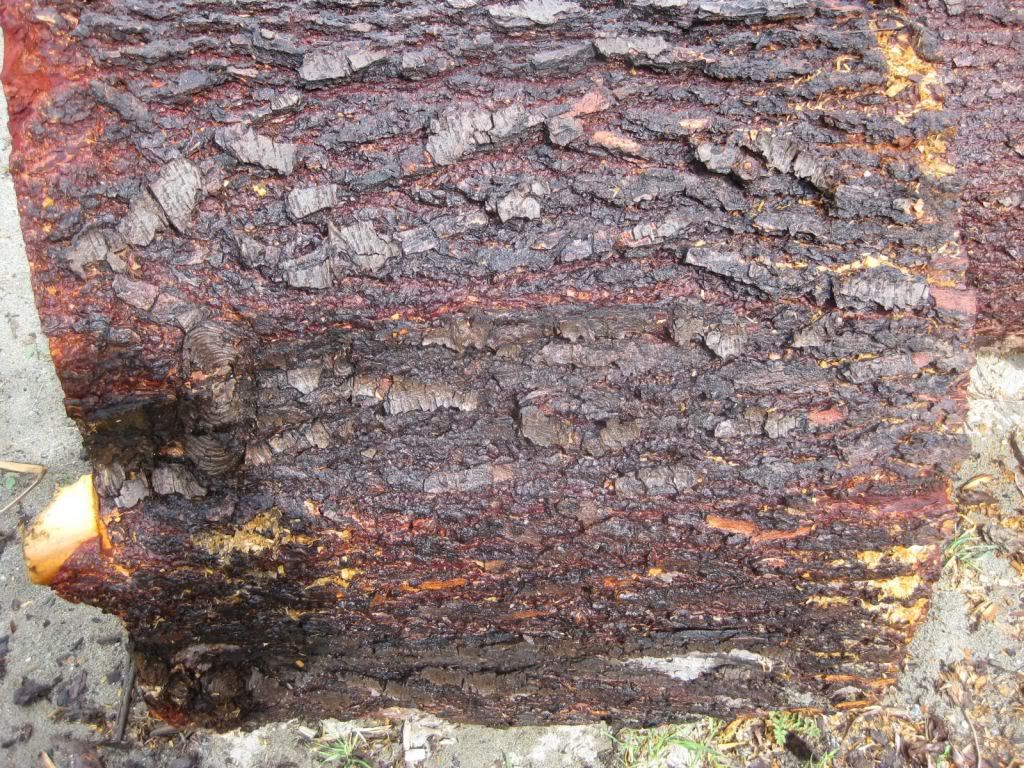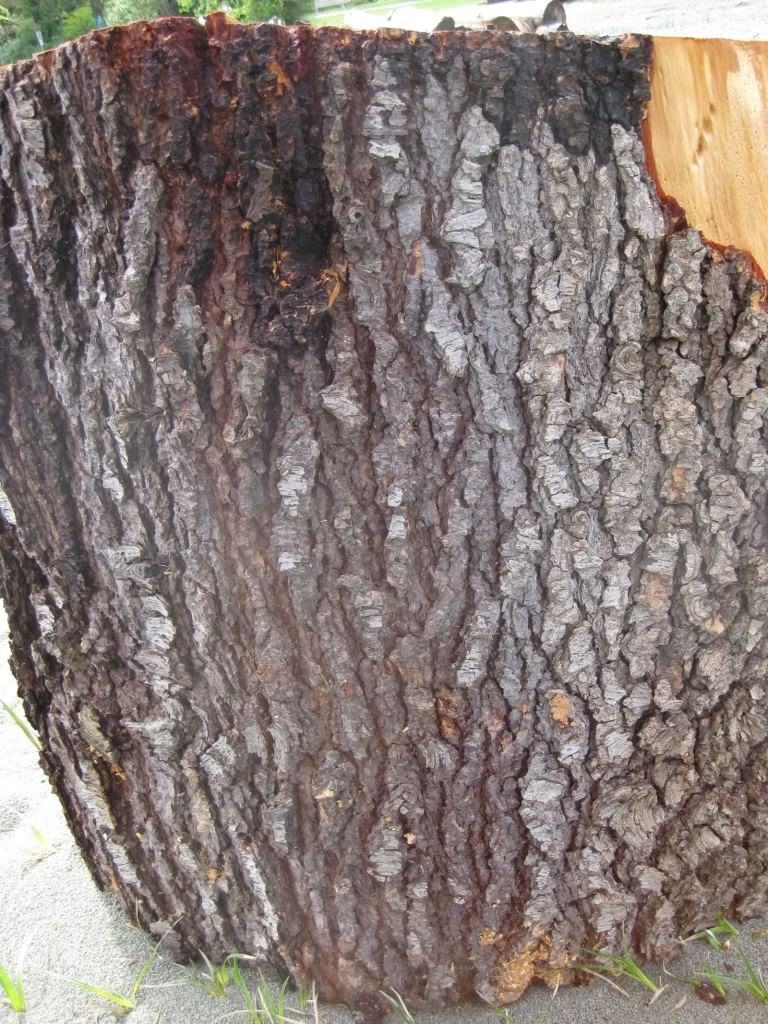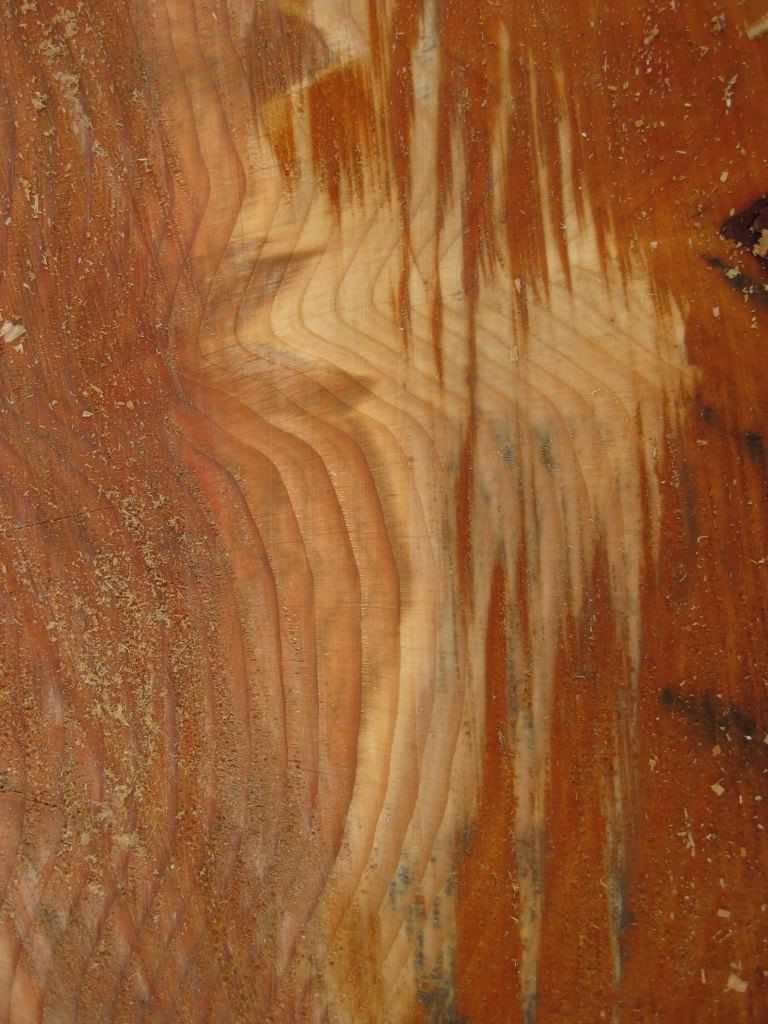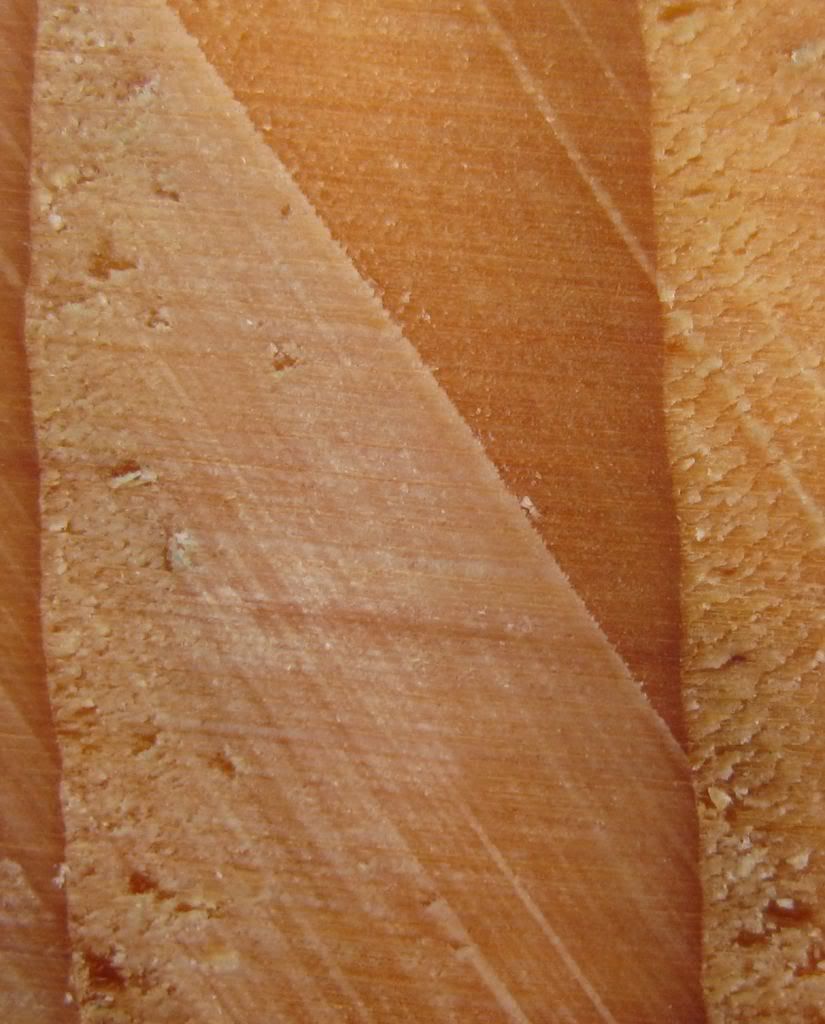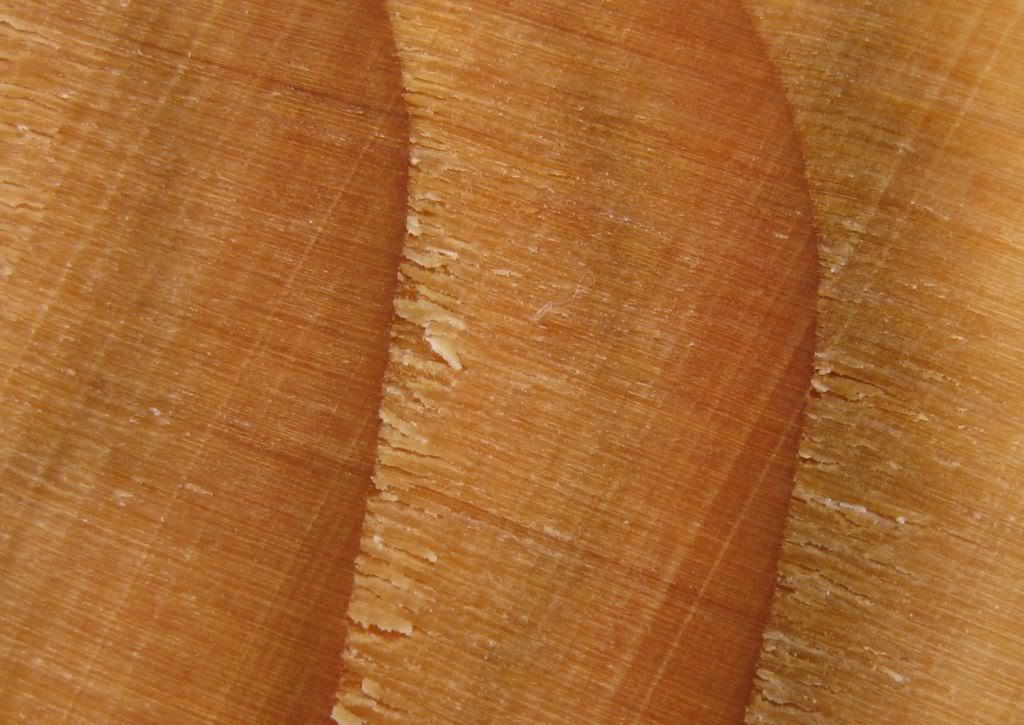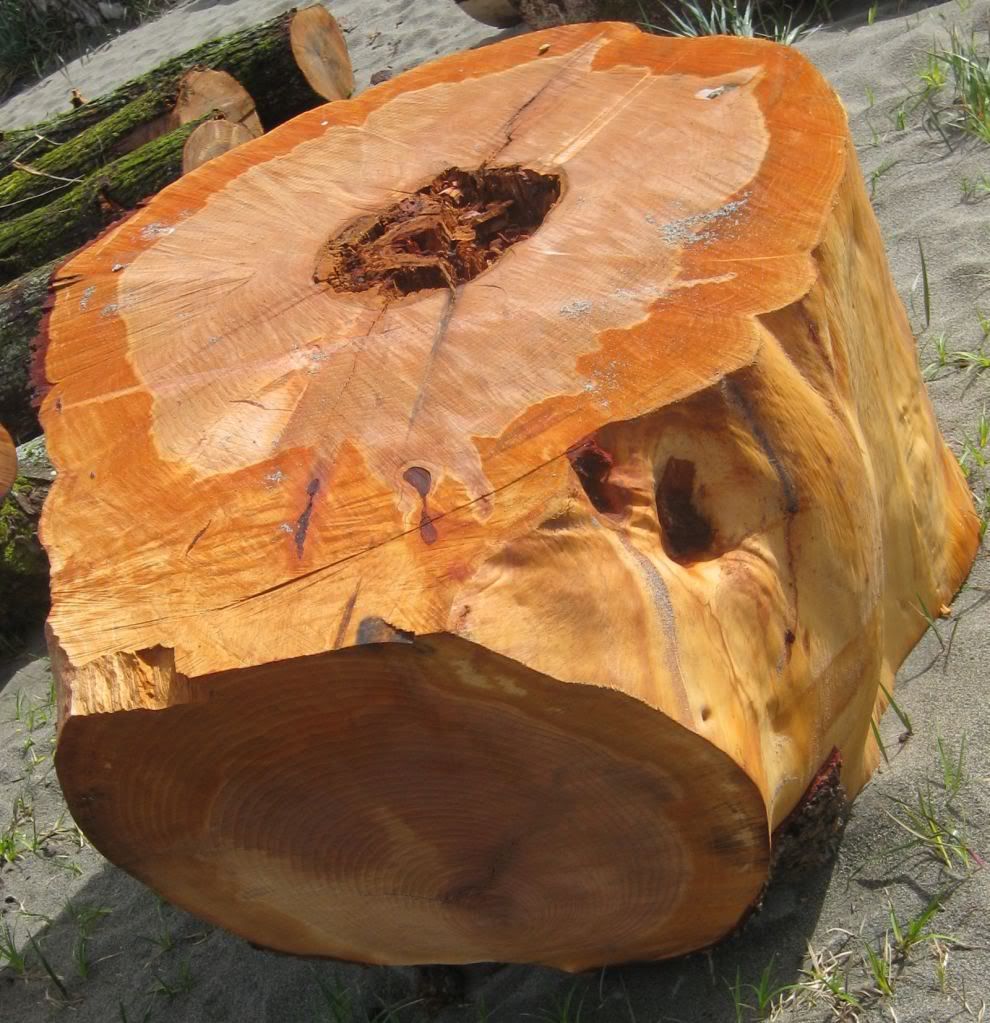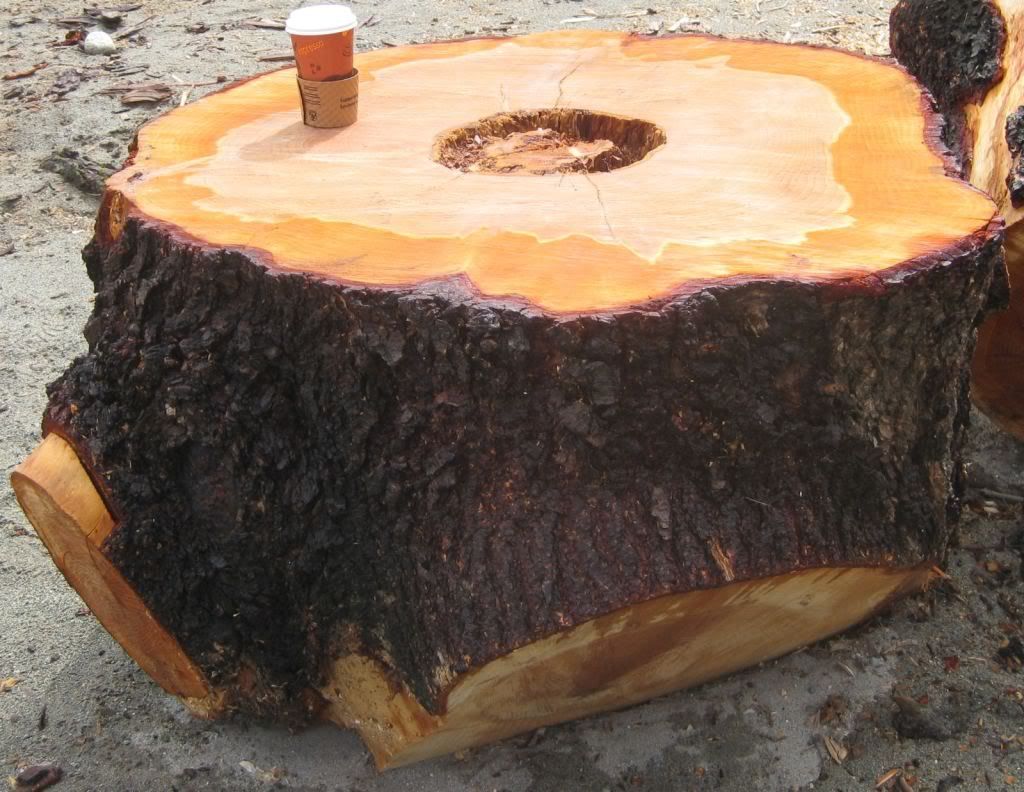Daninvan
ArboristSite Operative
A bunch of these logs showed up at the cutting area recently. I need some help figuring out what wood it is.
The pieces are about 2 1/2' in diameter, but not very long unfortunately, they were cut into shorter lengths to make them easier to manage I guess.
I don't know if it is a native species or not. As you can see it was quite happy growing here though, the growth rings are up to 1/2" apart. I estimate the tree was only about 60 years old.
A couple people suggested fir, but I am pretty sure it is not any local fir species. Douglas fir is common locally but this is definitely not Doug fir.
The sapwood was originally lighter than the heartwood, the sapwood has stained an orange-y colour as it sat there.
It does have a very distinct aroma. It's a pleasant smell, to me it smells "dry" if that makes any sense. Now that the logs have been sitting for a while, there is a very distinct element of peach or mango in the smell.
The branches are sparse and huge.
My only other guesses are cedar of Lebanon or sequoia? I couldn't find any info on if sequoia has a smell.
I've attached a picture of the log, the end grain, and the bark.



Thanks!
Dan
The pieces are about 2 1/2' in diameter, but not very long unfortunately, they were cut into shorter lengths to make them easier to manage I guess.
I don't know if it is a native species or not. As you can see it was quite happy growing here though, the growth rings are up to 1/2" apart. I estimate the tree was only about 60 years old.
A couple people suggested fir, but I am pretty sure it is not any local fir species. Douglas fir is common locally but this is definitely not Doug fir.
The sapwood was originally lighter than the heartwood, the sapwood has stained an orange-y colour as it sat there.
It does have a very distinct aroma. It's a pleasant smell, to me it smells "dry" if that makes any sense. Now that the logs have been sitting for a while, there is a very distinct element of peach or mango in the smell.
The branches are sparse and huge.
My only other guesses are cedar of Lebanon or sequoia? I couldn't find any info on if sequoia has a smell.
I've attached a picture of the log, the end grain, and the bark.
Thanks!
Dan















































